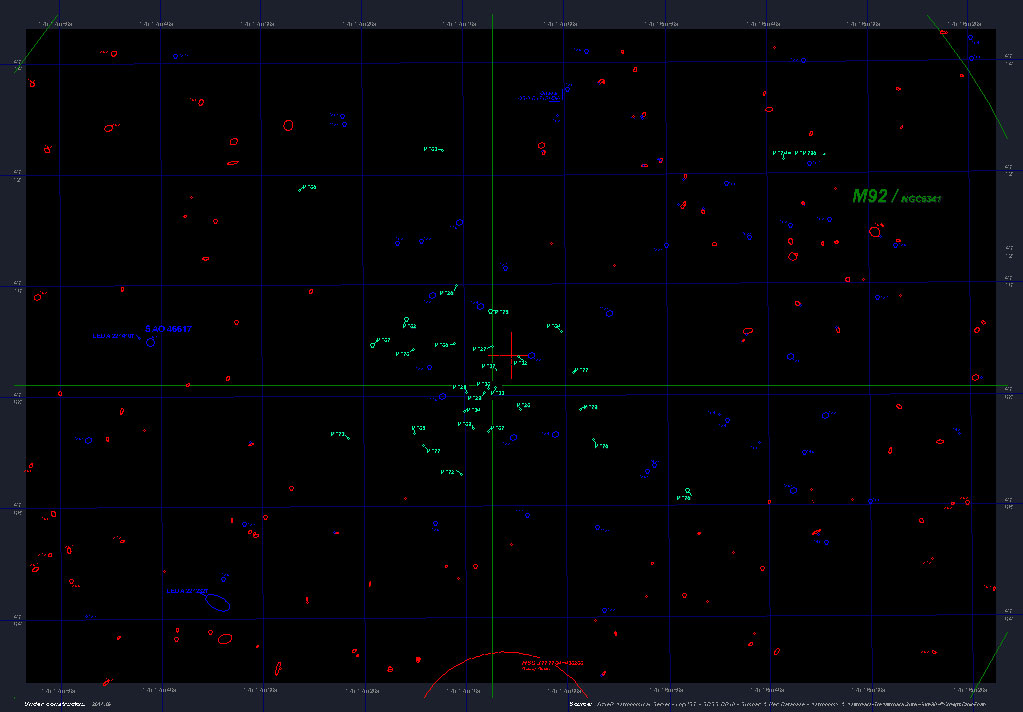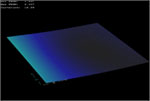 |
||
| Al di la della Luna; Beyond the Moon; Astrophotography; Astrofotografia; Danilo Pivato | ||
 |
|||||||||||||||||||||||||||||||||||||||||||||||||||||||||||||||||||||||||||||||||||||||||||||||||||||||||||||||||||||||||||||||||||||||||||||||||||||||||||||||||||||||||||||||||||||||||||||||||||||||||||||||||||||||||||||||||||||||||||||||||||||||||||||||||||||||||||||||||||||||||||||||||||||||||||||||||||||||||||||||||||||||||||||||||||||||||||||||||||||||||||||||||||||||||||||||||||||||||||||||||||||||||||||||||||||||||||||||||||||||||||||||||||||
Photo: Danilo Pivato © Copyright: - Images & texts 2014 - All rights reserved |
|||||||||||||||||||||||||||||||||||||||||||||||||||||||||||||||||||||||||||||||||||||||||||||||||||||||||||||||||||||||||||||||||||||||||||||||||||||||||||||||||||||||||||||||||||||||||||||||||||||||||||||||||||||||||||||||||||||||||||||||||||||||||||||||||||||||||||||||||||||||||||||||||||||||||||||||||||||||||||||||||||||||||||||||||||||||||||||||||||||||||||||||||||||||||||||||||||||||||||||||||||||||||||||||||||||||||||||||||||||||||||||||||||||
The Analysis of Frame |
|||||||||||||||||||||||||||||||||||||||||||||||||||||||||||||||||||||||||||||||||||||||||||||||||||||||||||||||||||||||||||||||||||||||||||||||||||||||||||||||||||||||||||||||||||||||||||||||||||||||||||||||||||||||||||||||||||||||||||||||||||||||||||||||||||||||||||||||||||||||||||||||||||||||||||||||||||||||||||||||||||||||||||||||||||||||||||||||||||||||||||||||||||||||||||||||||||||||||||||||||||||||||||||||||||||||||||||||||||||||||||||||||||||
M 92; NGC 6341; C 1715+432; GCl 59: Globular Cluster in Hercules - [field: 0,20° x 0,29°] - Magnitudine limite stellare della mappa: 21,0^ (r) - 21,4^ (r) |
|||||||||||||||||||||||||||||||||||||||||||||||||||||||||||||||||||||||||||||||||||||||||||||||||||||||||||||||||||||||||||||||||||||||||||||||||||||||||||||||||||||||||||||||||||||||||||||||||||||||||||||||||||||||||||||||||||||||||||||||||||||||||||||||||||||||||||||||||||||||||||||||||||||||||||||||||||||||||||||||||||||||||||||||||||||||||||||||||||||||||||||||||||||||||||||||||||||||||||||||||||||||||||||||||||||||||||||||||||||||||||||||||||||
|
|||||||||||||||||||||||||||||||||||||||||||||||||||||||||||||||||||||||||||||||||||||||||||||||||||||||||||||||||||||||||||||||||||||||||||||||||||||||||||||||||||||||||||||||||||||||||||||||||||||||||||||||||||||||||||||||||||||||||||||||||||||||||||||||||||||||||||||||||||||||||||||||||||||||||||||||||||||||||||||||||||||||||||||||||||||||||||||||||||||||||||||||||||||||||||||||||||||||||||||||||||||||||||||||||||||||||||||||||||||||||||||||||||||
M 92: RAJ2000.0: 17h17m07.39s - Dec J2000.0: +43d08m09.4s - Maestoso ammasso globulare di magnitudine (v) 6,52^ (SIMBAD) con nucleo piuttosto brillante e compatto. Ignorato spesso dagli astrofili a causa della vicinanza dell'ancor più spettacolare ammasso globulare M13 dal quale dista 9,5° direzione SW, presenta un grado di concentrazione piuttosto alto (tipo IV) il quale, a differenza delle altre immagini a risoluzioni più basse, infatti in questa immagine è ben risolto - risulta alquanto complesso riuscire a portare a termine elaborazioni in cui si mostrano definite sia le stelle del nucleo e sia le stelle più esterne e deboli. Le stelle facenti parte il nucleo di M92 infatti, alla risoluzione della foto fatta con il Mewlon 300, risultano si luminose, ma ben separate e nette. Il valore delle dimensioni apparenti di M92 nel visuale, deducibili dai classici cataloghi, ammonta a 11', invece in questa foto appare chiaro come in realtà l'ammasso globulare appaia ben più ampio, in quanto le stelle più deboli ed esterne che sono impresse, raggiunge i 21' di diametro. Scoperto nel 1777 da Johann Elert Bode fu riscoperto indipendentemente nel 1781 da Messier. L'ammasso M92 è qui fotografato in un campo apparente di 0,20° x 0,29° in cui il campo è totalmente riempito dall'ammasso stesso. La stella più luminosa è SAO 46617 di 9,76^ mag. (r) situata a 6' E dal centro di M92. Con i suoi +43° di declinazione M92 è il più settentrionale degli ammassi globulari di Messier con la caratteristica di passare allo zenit da tutte le nostre latitudini. Fatto curioso poi che M92 avendo coordinate eclitticali piuttosto elevate (long= 249,9° e lat= 65,9°) è stato calcolato che tra circa 14mila anni per effetto del moto di precessione diventerà la "Polarissima" dell'emisfero boreale. La sua distanza da noi secondo le ultime stime è di 27.000 anni luce. Nel suo interno sono state scoperte diverse stelle variabil la maggior parte delle quali sono di tipo: RR Lyrae: per l'esattezza si conoscono 17 stelle variabili del tipo RR Lyra; e 7 del tipo SX Pheonicis. Inoltre è inclusa una binaria ad eclisse tipo W Ursae Majoris: V* V798 Her. |
|||||||||||||||||||||||||||||||||||||||||||||||||||||||||||||||||||||||||||||||||||||||||||||||||||||||||||||||||||||||||||||||||||||||||||||||||||||||||||||||||||||||||||||||||||||||||||||||||||||||||||||||||||||||||||||||||||||||||||||||||||||||||||||||||||||||||||||||||||||||||||||||||||||||||||||||||||||||||||||||||||||||||||||||||||||||||||||||||||||||||||||||||||||||||||||||||||||||||||||||||||||||||||||||||||||||||||||||||||||||||||||||||||||
Tabella delle stelle variabili di M92 tratto da: "Christine Clement's Catalog of variable Stars in M92 - Updated July 2012" - con riferimenti diretti alla mappa -
Variable Stars in M92 (see the map)
|
|||||||||||||||||||||||||||||||||||||||||||||||||||||||||||||||||||||||||||||||||||||||||||||||||||||||||||||||||||||||||||||||||||||||||||||||||||||||||||||||||||||||||||||||||||||||||||||||||||||||||||||||||||||||||||||||||||||||||||||||||||||||||||||||||||||||||||||||||||||||||||||||||||||||||||||||||||||||||||||||||||||||||||||||||||||||||||||||||||||||||||||||||||||||||||||||||||||||||||||||||||||||||||||||||||||||||||||||||||||||||||||||||||||
Supplementary Notes: A good summary of investigations of the variable stars in M92 was given by Kopacki (2001). V1-32: The RA and dec are from Samus et al. (2009). The periods, magnitudes, amplitudes and classifications are from Kopacki (2001) unless indicated otherwise in the notes on individual stars. V14 and V16: were outside his field of view. V33-39 All the data are from Kopacki (2007). Notes on individual stars V12: Some confusion about the identity of this star arose because there was an error in the sign of the x coordinate published by Hachenberg (1939). It should have been +29.9" instead of -29.9". The incorrect value was published by Sawyer in her three catalogues (Sawyer 1939, 1955; Sawyer Hogg 1973). Bartolini et al. (1968) discovered the error and recognized that V12 was the same star as Nassau's V10 which had been designated as V15 by Sawyer (1939, 1955) in her first two catalogues. V14: This star was classified as W Ursae Majoris by Hachenberg (1939) who derived a period of 0.346178 days and noted that it did not belong to the cluster. The non-member status was later confirmed in proper motion studies by Rees (1992) and by Tucholke et al. (1996). The period, magnitude and amplitude listed above are from Bartolini et al. (1968) V16: This was Nassau's suspected variable V15. It was subsequently established by Arp et al. (1953) that it was not variable and this result was confirmed by Walker (1955). Discovery of the variable stars in M92: V1-14 Hachenberg (1939) with x,y positions and numbers from the Hopman (1930) catalogue. Hachenberg noted that these variables had been previously discovered by Woods (1922) and Guthnick & Prager (1925). Woods announced the discovery and published x,y coordinates for the variable now known as V11. Guthnick & Prager (1925) announced that they had discovered 13 variables in M92, but did not publish any positions. The numbers V1-14 were assigned by Hachenberg. Most of these variables were independently discovered by Nassau (1938) who published an ID chart. However, the Nassau and Hachenberg numbering systems were different. Sawyer (1939, 1955) adopted Hachenberg's (1939) system in her catalogues. A table with cross correlations between the different numbering systems was published by Kadla et al. (1983). V15 = V12 of Nassau (1938) who labelled it on a chart The number V15 was assigned by Sawyer Hogg (1973) in her 3rd catalogue. In her first two catalogues (Sawyer 1939, 1955), she designated this star as V16 and Nassau's V10 was designated as V15. Bartolini et al. (1968) later discovered that Nassau's V10 was the same star as Hachenberg's V12. Sawyer (1939, 1955) had not realized this because the x coordinate Hachenberg (1939) published for his V12 was incorrect. V16-17 = Nassau's (1938) suspected variables V15-16 which he labelled on an ID chart. Their x,y coordinates were derived by Kadla et al. (1983) and the numbers V16-17 were later assigned by Clement et al. (2001) in accordance with the system established by Kadla et al. (1983). V18-28 Kadla et al. (1983) with x,y coordinates and an ID chart They also published a table with cross correlations between the numbering systems of Sawyer (1939,1955), Sawyer Hogg (1973) and Nassau (1938) for V1-17. V29-34 Kopacki (2001) with x,y coordinates and an ID chart V35-39 Kopacki (2007) with RA, dec and ID chart Kopacki also provided ID for 3 blue stragglers suspected of variability. Walker (1955) suspected that three stars near the RG tip might be variable, but Welty (1985) did not detect any variablility with B amplitude greater than 0.2 mag for any of them. Shara et al. (1994) surveyed the cluster for erupting dwarf novae but did not detect any; they established an upper limit based on their results. Tuairisg et al. (2003) later announced a possible dwarf nova candidate. Lynch & Ransom (2011) conducted a search for pulsars, but did not find any in M92
|
|||||||||||||||||||||||||||||||||||||||||||||||||||||||||||||||||||||||||||||||||||||||||||||||||||||||||||||||||||||||||||||||||||||||||||||||||||||||||||||||||||||||||||||||||||||||||||||||||||||||||||||||||||||||||||||||||||||||||||||||||||||||||||||||||||||||||||||||||||||||||||||||||||||||||||||||||||||||||||||||||||||||||||||||||||||||||||||||||||||||||||||||||||||||||||||||||||||||||||||||||||||||||||||||||||||||||||||||||||||||||||||||||||||
| LEDA 2212327: RAJ2000.0: 17h17m34.600s - Dec J2000.0: +43d04m17.0s - Sul software planetario Guide 9, alle coordinate prima riportate s'individua una galassia con asse maggiore di 0,64' e angolo di posizione pari a 64°. E' un probabile errore di lettura della scansione delle lastre del DSS. Infatti LEDA 2212327 non è altro che l'insieme di 3 deboli stelle, rispettivamente di 15,95^; 16,7^ e 17,3^ | |||||||||||||||||||||||||||||||||||||||||||||||||||||||||||||||||||||||||||||||||||||||||||||||||||||||||||||||||||||||||||||||||||||||||||||||||||||||||||||||||||||||||||||||||||||||||||||||||||||||||||||||||||||||||||||||||||||||||||||||||||||||||||||||||||||||||||||||||||||||||||||||||||||||||||||||||||||||||||||||||||||||||||||||||||||||||||||||||||||||||||||||||||||||||||||||||||||||||||||||||||||||||||||||||||||||||||||||||||||||||||||||||||||
| Le galassie di fondo di M92: Molteplici sono le piccole e debolissime galassie che si proiettano sullo sfondo dell'ammasso globulare M92. La presenza di tutte queste galassie è stata accertata consultando in maniera incrociata diverse fonti disponibili, dalle immagini profonde dei fits realizzati degli Osservatori professionali, a quelli particolareggiati dell'Hubble Space Telescope, comprese le grandi rassegne (Survey) del cielo. | |||||||||||||||||||||||||||||||||||||||||||||||||||||||||||||||||||||||||||||||||||||||||||||||||||||||||||||||||||||||||||||||||||||||||||||||||||||||||||||||||||||||||||||||||||||||||||||||||||||||||||||||||||||||||||||||||||||||||||||||||||||||||||||||||||||||||||||||||||||||||||||||||||||||||||||||||||||||||||||||||||||||||||||||||||||||||||||||||||||||||||||||||||||||||||||||||||||||||||||||||||||||||||||||||||||||||||||||||||||||||||||||||||||


